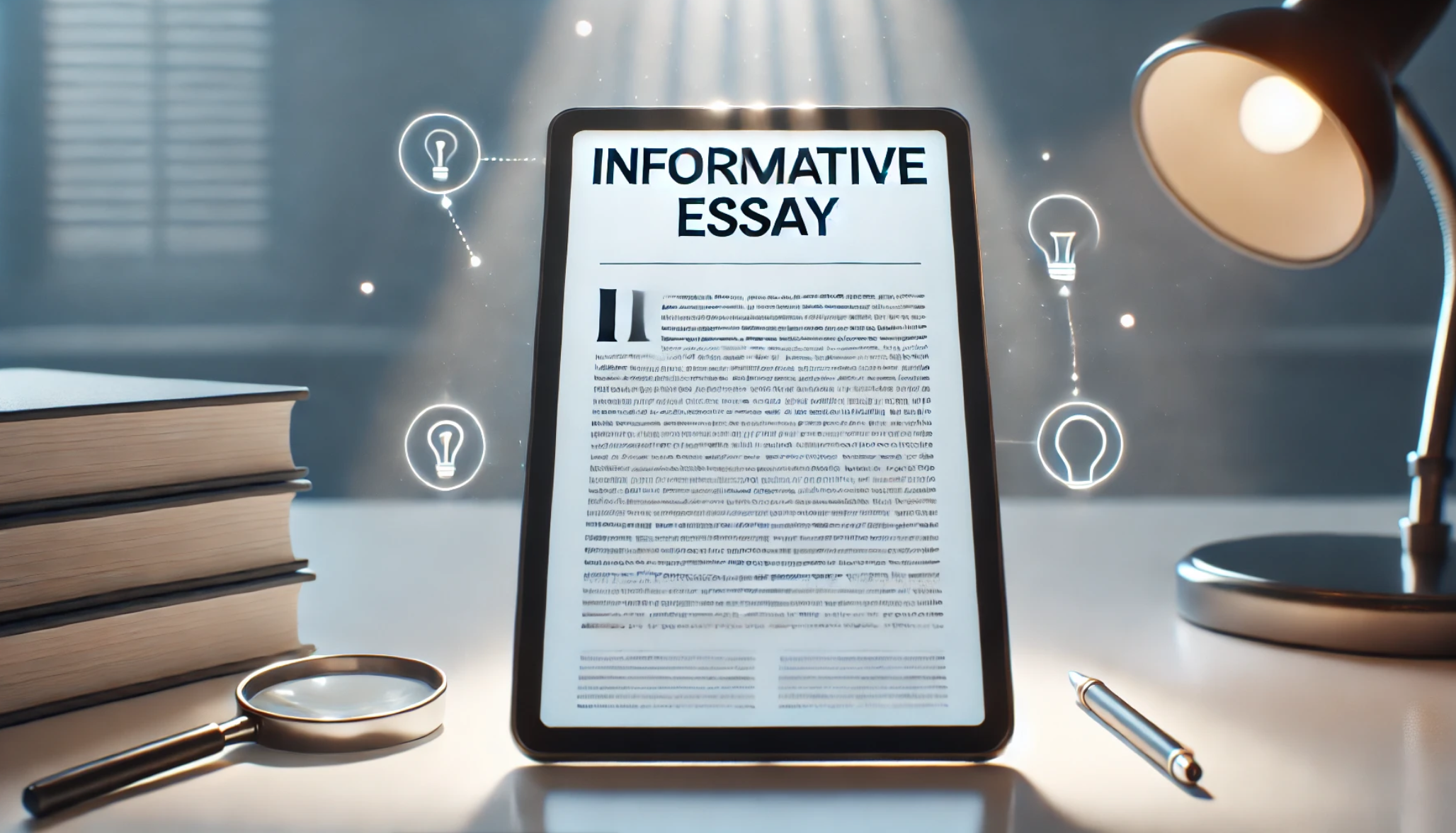Think of yourself as a detective trying to solve an interesting case. Evidence is an idea, an argument is a clue, and the conclusion is the final verdict in this case. An AI generated essay tool works just like your Watson to make the case easy and straightforward for you. Whether you’re writing an academic essay or want to convince somebody of something, in this step-by-step guide, you will learn how to generate an essay with AI.
Step 1: Define the Case (Your Essay Topic)
First things first, before you begin writing your essay, you ought to have a strong case file. It involves figuring out what your essay demands – its aim and its ambit:
- Select the Subject: What is the subject matter of the essay? Is it a textual analysis of a scientific debate or argument?
- Develop or Construct the Thesis: A thesis is a main idea, which is sometimes referred to as the answer to the whodunit question. A strong thesis is critical because it provides direction for the essay and helps the writer to ensure that each point is related to the main idea or central argument.
- Identify the Range: Decide the range. Is it just a short analysis or an elaborate analysis?
This activity can be visualized as creating a case for detectives. Once the assistant knows the “crime” (or subject), it would analyze the proofs to create an efficient story.
Step 2: Gather Evidence (Key Points and Supporting Details)
No detective can imagine cracking a case without the evidence! For your paper, the evidence is a collection of key points, arguments, and details you’ll be supporting:
To gather evidence:
1. Find Reliable Sources: Research and identify credible information using books, articles, or online databases.
2. Structure the Material: Arrange similar ideas and be mindful of important specifics such as quotations and statistics.
3. Create a Citations Plan: Each piece of evidence should contain information about the author’s name, year, and source. You need to use these as references for writing.
Think of your AI as a magnifying glass, a tool used by detectives to examine the pieces of evidence you hand over. The stronger the evidence you give, the more conclusive your essay will become.
Step 3: Let AI Connect the Clues (Generate the Essay)
Finally, you should make an AI generated essay. Based on your evidence, thesis statements, and special requests, the AI tool will compose a meaningful paper for you. It will connect all relationships and output logic.
Output example:
- Key Points: Provide your essential points, including your arguments, evidence to support them, and any specific organizational style you want.
- Tone: Indicate what tone you want for the essay, whether it be formal, conversational, informal, or persuasive.
- Style: State the word count requirement, the format that you want, and the citation style.
Imagine AI as a genius detective of your writing, creating a refined draft from your ideas. Watson came up with an elaborate case paper from Dr. Holmes’ notes.
Step 4: Analyze and Refine the Draft
After AI creates an essay for you, you should wear your detective’s hat one more time. You need to thoroughly check whether the draft fulfills your requirements:
- Check for Coherence: Ensure each paragraph flows logically into the next.
- Adjust for Style: Modify the tone or phrasing to match your personal writing voice.
- Enhance Key Points: Add unique insights or additional examples to strengthen arguments.
Finalizing the Draft is as Crucial as Writing the Essay. It’s important to double-check everything to make sure that the essay is going in the right direction and has the desired impact on the reader. Remember, even Sherlock Holmes verifies his findings.
Step 5: Build Your References with AI
Just like every detective has to have references, your essay should have references, too! Make sure to use an AI citation tool to create a properly formatted bibliography:
- Input Source Details: Include the author’s name, title, publication date, and URL for each source.
- Choose a Citation Style: Select APA, MLA, or Chicago, depending on your requirements.
- Generate and Review: The AI creates a formatted bibliography. Double-check for accuracy before adding it to your essay.
A clean and professional reference list adds credibility to your work, showing that your arguments are backed by solid evidence.
How Litero AI Can Elevate Your AI Generated Essay
When it comes to crafting an AI-generated essay, Litero AI is the ultimate detective assistant. It not only generates essays but also ensures clarity, organization, and precision.
What Makes Litero AI Stand Out?
- Thesis Building Support: Helps you formulate a clear and impactful thesis.
- Logical Paragraph Flow: Creates structured outline and body paragraphs with smooth transitions.
- Flawless Citations: Automatically generates accurate bibliographies in multiple citation styles.
With Litero AI, your essay is no longer just a draft—it’s a masterpiece. Try it and take your writing to the next level.
Step 6: Wrap It All Up with a Strong Conclusion
The conclusion is your big finish! You want to bring everything together, restate your main ideas, restate your thesis, and give your reader something to think about.
- Recap the Argument: Revisit the key points and how they support your thesis.
- End with Impact: Pose a thought-provoking question or share a bold statement that sticks with your reader.
This final step ensures your essay ends on a high note, much like a detective’s closing argument in a courtroom.
Crack the Case with AI Generated Essay Tools
AI generated essay writing tool turns this unpleasant experience into a pleasant and interesting activity! Follow certain guidelines and, with the help of AI, engage in detective work and produce effective and efficient essays. Be a blockbuster essay writer, pick up a magnifying glass, take advantage of AI, and solve the mystery of essay production! Elementary, my dear writer!

